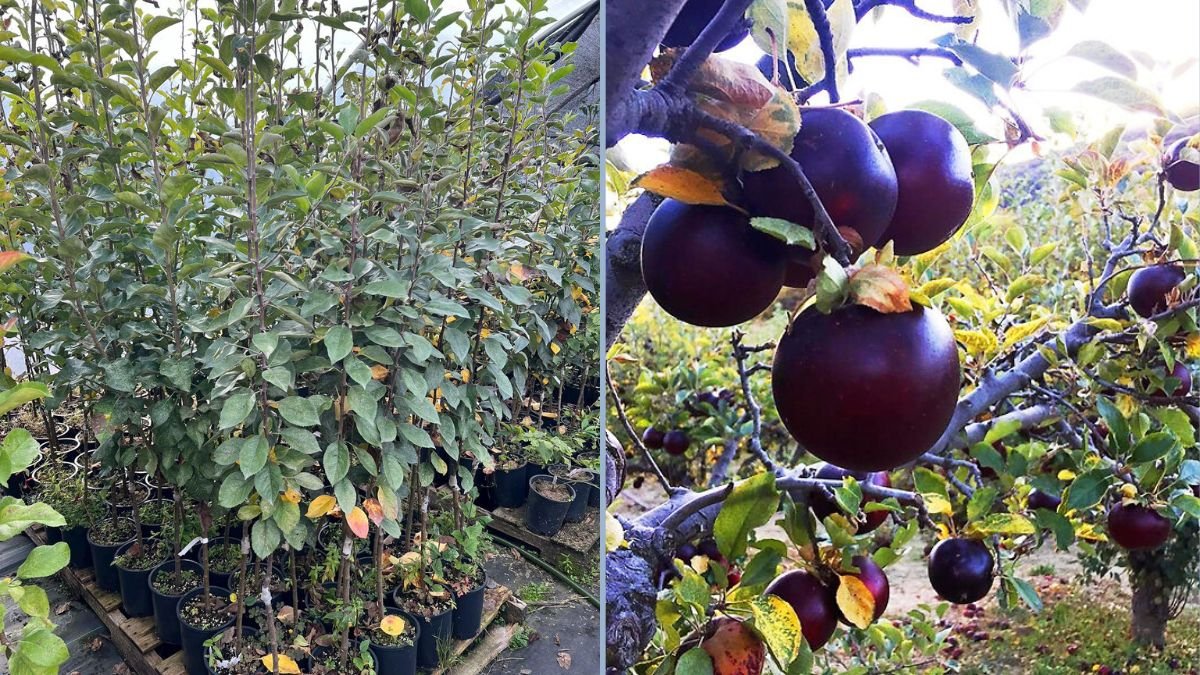Planting an Arkansas Black apple tree in your backyard or garden is a fantastic way to enjoy fresh, crisp, and uniquely colored apples right at home. Known for their deep, almost black skin and firm, sweet-tart flavor, Arkansas Black apples are not only visually striking but also versatile for fresh eating, baking, and storage.
Whether you’re a seasoned gardener or a beginner looking to start your backyard orchard, this guide will walk you through everything you need to know about planting, caring for, and harvesting an Arkansas Black apple tree.
Why Choose Arkansas Black Apples?
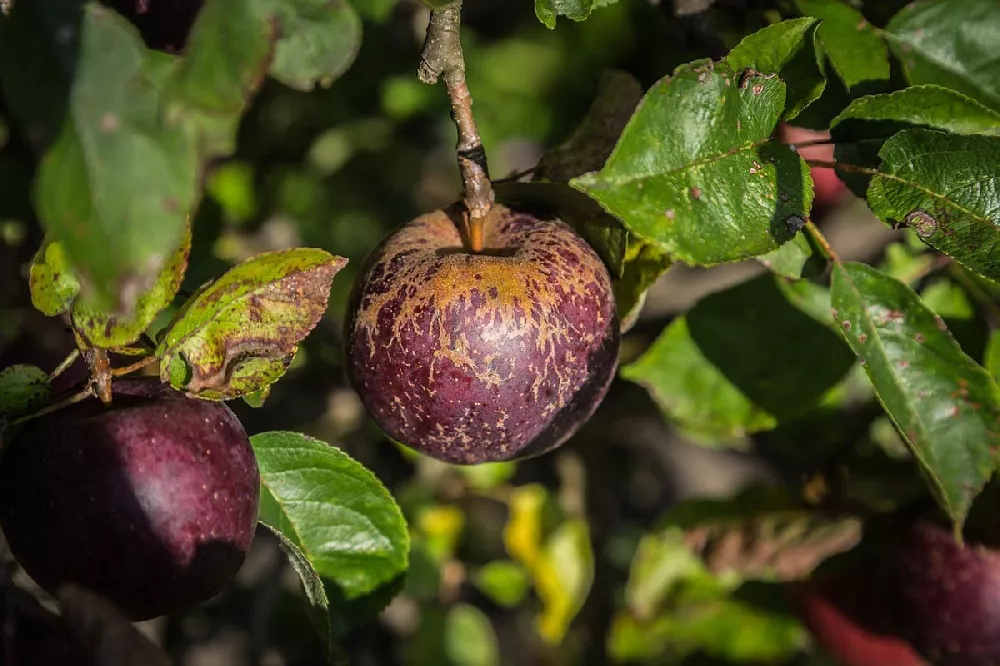
Arkansas Black apples are a distinctive heirloom variety with several appealing traits:
- Unique Appearance: Dark red to deep purple-black skin makes them visually striking.
- Flavor Profile: Firm, crisp, sweet-tart flavor, perfect for pies, cider, and fresh consumption.
- Excellent Storage: These apples improve in flavor after storage and can last well into winter.
- Reliable Production: Hardy trees produce consistent yields when properly cared for.
- Orchard Appeal: Their dark fruit contrasts beautifully against spring blossoms and green foliage.
These characteristics make Arkansas Black apples an excellent choice for a backyard orchard or kitchen garden, combining beauty, flavor, and productivity.
Selecting the Right Arkansas Black Apple Tree
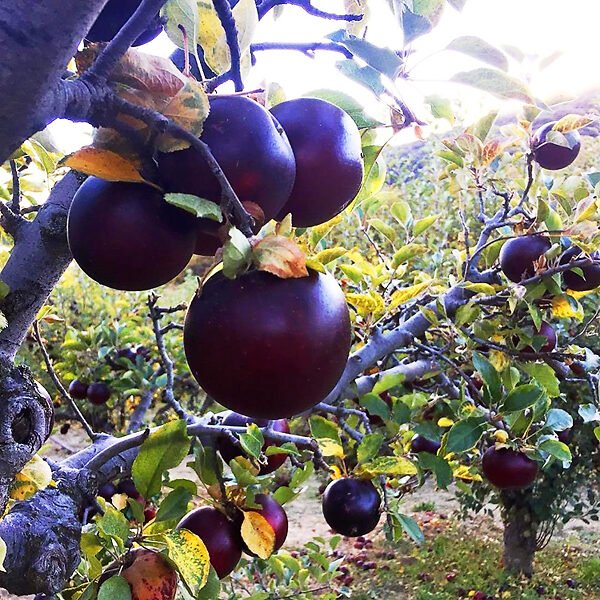
Before planting, consider the following factors:
1. Tree Type
- Bare-Root Trees: Sold during winter dormancy, they are economical and establish well when planted in early spring.
- Container-Grown Trees: Available year-round, easier to plant, and reduce transplant shock.
2. Rootstock
Rootstock influences tree size, growth rate, and adaptability:
- Dwarf Rootstock: 8–10 feet tall; ideal for patios, small gardens, and containers.
- Semi-Dwarf Rootstock: 12–15 feet tall; perfect for medium backyard spaces.
- Standard Rootstock: 18–25 feet tall; suitable for larger gardens or small orchards.
3. Pollination
Arkansas Black apples are partially self-fertile, but cross-pollination with another compatible apple variety (such as Fuji, Gala, or Honeycrisp) enhances fruit set and size. Bees are essential for pollination.
Choosing the Planting Site
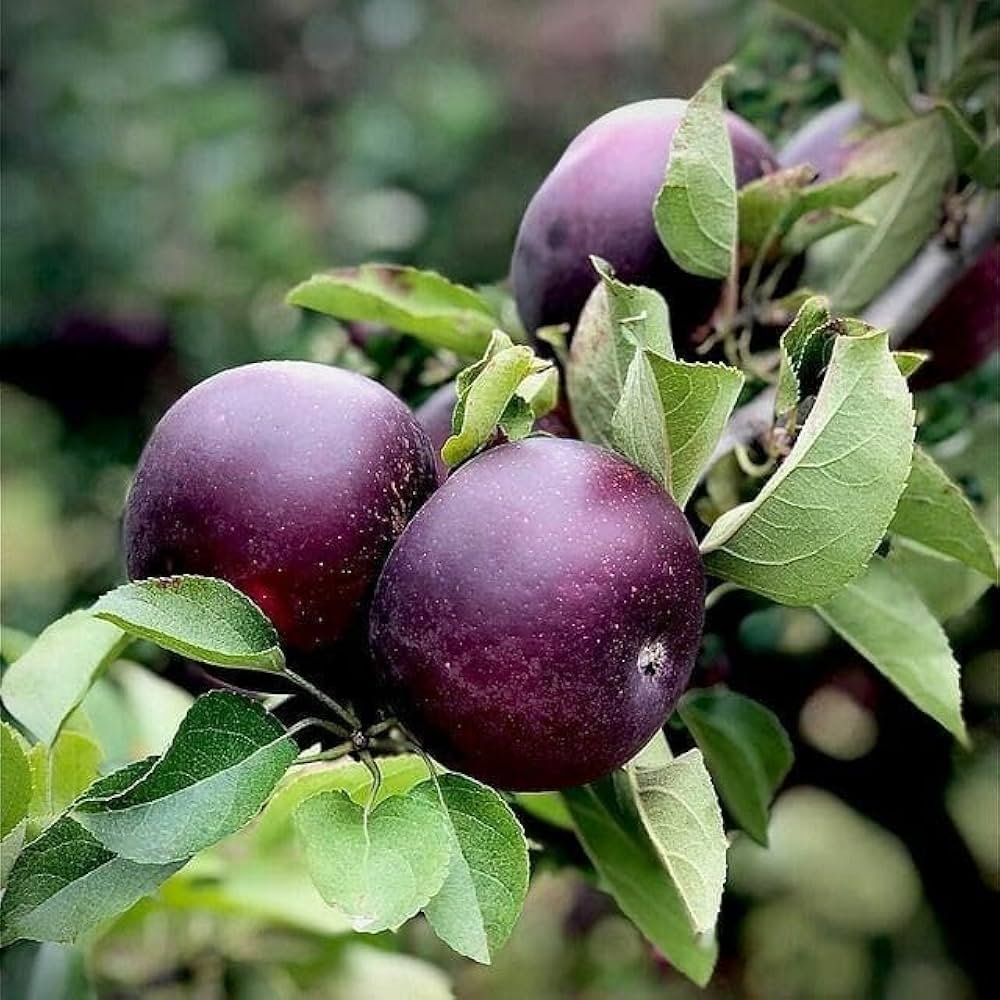
Selecting the right site ensures your Arkansas Black apple tree thrives:
1. Sunlight
- Requires 6–8 hours of direct sunlight daily.
- Sunlight enhances sugar development, fruit color, and overall flavor.
2. Soil
- Well-draining, loamy soil is ideal.
- Soil pH: 6.0–7.0.
- Amend soil with compost or well-rotted manure to improve fertility and drainage.
3. Air Circulation
- Open areas reduce fungal diseases like apple scab and powdery mildew.
- Avoid low spots prone to frost or water accumulation, which can damage roots and young growth.
4. Spacing
- Standard trees: 18–25 feet apart
- Semi-dwarf: 12–15 feet apart
- Dwarf: 8–10 feet apart
Proper spacing ensures sunlight reaches all branches and simplifies pruning and harvesting.
Planting Your Arkansas Black Apple Tree
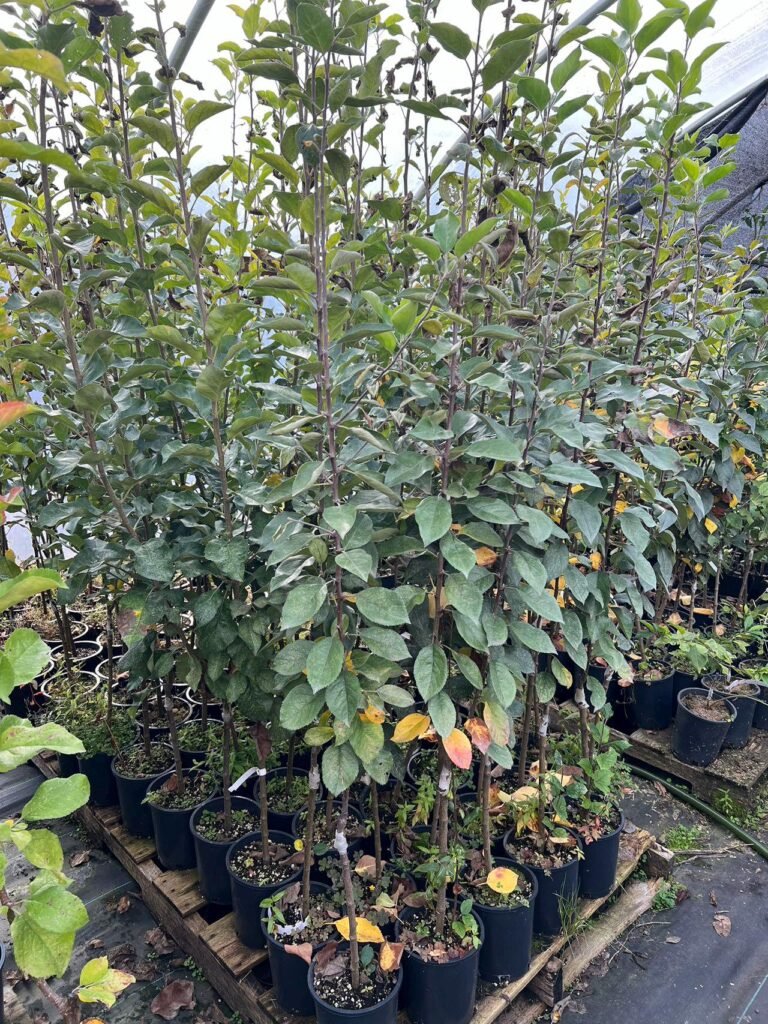
Proper planting sets the foundation for a healthy, productive tree.
Step 1: Dig the Hole
- Dig a hole twice the width of the root ball and slightly deeper than the roots.
- Loosen soil at the bottom to encourage strong root growth.
Step 2: Position the Tree
- Place the tree in the hole with the graft union a few inches above soil level.
- Spread roots evenly and backfill with soil mixed with compost.
- Firm soil gently to eliminate air pockets.
Step 3: Watering and Mulching
- Water thoroughly after planting.
- Apply 2–3 inches of mulch around the base to retain moisture and suppress weeds.
- Keep mulch a few inches away from the trunk to prevent rot.
Step 4: Staking
- Young trees may require staking for support, particularly in windy areas.
- Remove stakes after one growing season when the trunk has strengthened.
Caring for Your Arkansas Black Apple Tree
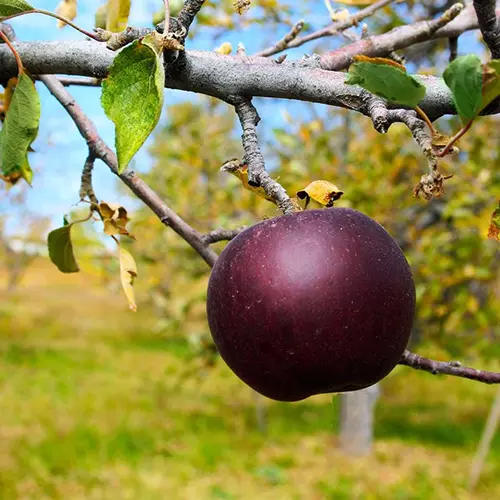
Proper care ensures strong growth and maximum fruit production.
1. Watering
- Young trees: Water 2–3 times per week to establish roots.
- Mature trees: Deep watering once a week, more frequently during dry spells.
- Mulching helps retain moisture and regulate soil temperature.
2. Fertilizing
- First-year trees: Light fertilization for root establishment.
- Second year onward: Apply a balanced fertilizer (10–10–10 NPK) in early spring.
- Avoid over-fertilization, which encourages leafy growth over fruiting.
3. Pruning
Pruning promotes tree structure, airflow, and fruit production.
Dormant Pruning
- Conduct in late winter before buds break.
- Remove dead, damaged, or crossing branches.
- Maintain a central leader or open-center structure.
Summer Pruning
- Optional light pruning removes vigorous shoots.
- Directs energy to fruiting branches.
Pollination and Flowering
- Arkansas Black apples produce white blossoms in spring, often with a pink tinge.
- Planting a compatible apple variety nearby ensures cross-pollination for better fruit set.
- Avoid pesticides during bloom to protect pollinators such as bees.
Pest and Disease Management
Even backyard apple trees need regular monitoring.
Common Pests
- Aphids
- Codling moth
- Spider mites
Common Diseases
- Apple scab
- Powdery mildew
- Fire blight
Prevention Tips:
- Prune for airflow and sunlight penetration.
- Remove fallen leaves and fruit to reduce fungal buildup.
- Apply organic sprays like neem oil or horticultural soap when necessary.
Thinning Fruit for Quality
- Thin young fruit clusters to 1–2 apples per cluster.
- Reduces branch stress and ensures larger, sweeter apples.
- Allows sunlight to reach all fruit, producing even ripening.
Harvesting Arkansas Black Apples
- Typically ripen in late October to early November, depending on climate.
- Signs of ripeness:
- Firm, crisp texture
- Deep red to nearly black color
- Slightly sweet-tart aroma
- Easy detachment from the branch
- Harvest carefully using scissors or gentle twisting to avoid branch damage.
- Arkansas Black apples are ideal for fresh eating, baking, and long-term storage, as their flavor improves after a few weeks of storage.
Container Growing Arkansas Black Apples
- Dwarf or semi-dwarf trees thrive in large containers, ideal for patios or small gardens.
- Use pots 18–24 inches in diameter with drainage holes.
- Fill with nutrient-rich potting soil mixed with compost and perlite.
- Water regularly and prune to maintain size and encourage fruiting.
Container cultivation allows even small spaces to support productive apple trees.
Additional Tips for a Thriving Apple Tree
- Monitor Growth: Inspect for pests, diseases, and nutrient deficiencies regularly.
- Mulch Annually: Helps retain moisture and maintain soil temperature.
- Support Young Trees: Stake to prevent wind damage.
- Patience is Key: Arkansas Black apples may take 3–5 years to produce a full harvest.
- Enjoy the Journey: Gardening is about nurturing growth and rewarding patience.
Conclusion
Planting an Arkansas Black apple tree is a rewarding endeavor for any home gardener. By selecting a healthy sapling, preparing the planting site, and providing proper watering, fertilization, and pruning, you can grow a strong, productive tree that delivers crisp, flavorful apples for years.
Even a small backyard can host a thriving Arkansas Black apple tree. With careful attention and consistent care, your tree will provide beautiful, dark-hued apples ideal for fresh eating, baking, and storage, bringing the taste and charm of an orchard to your home garden.
